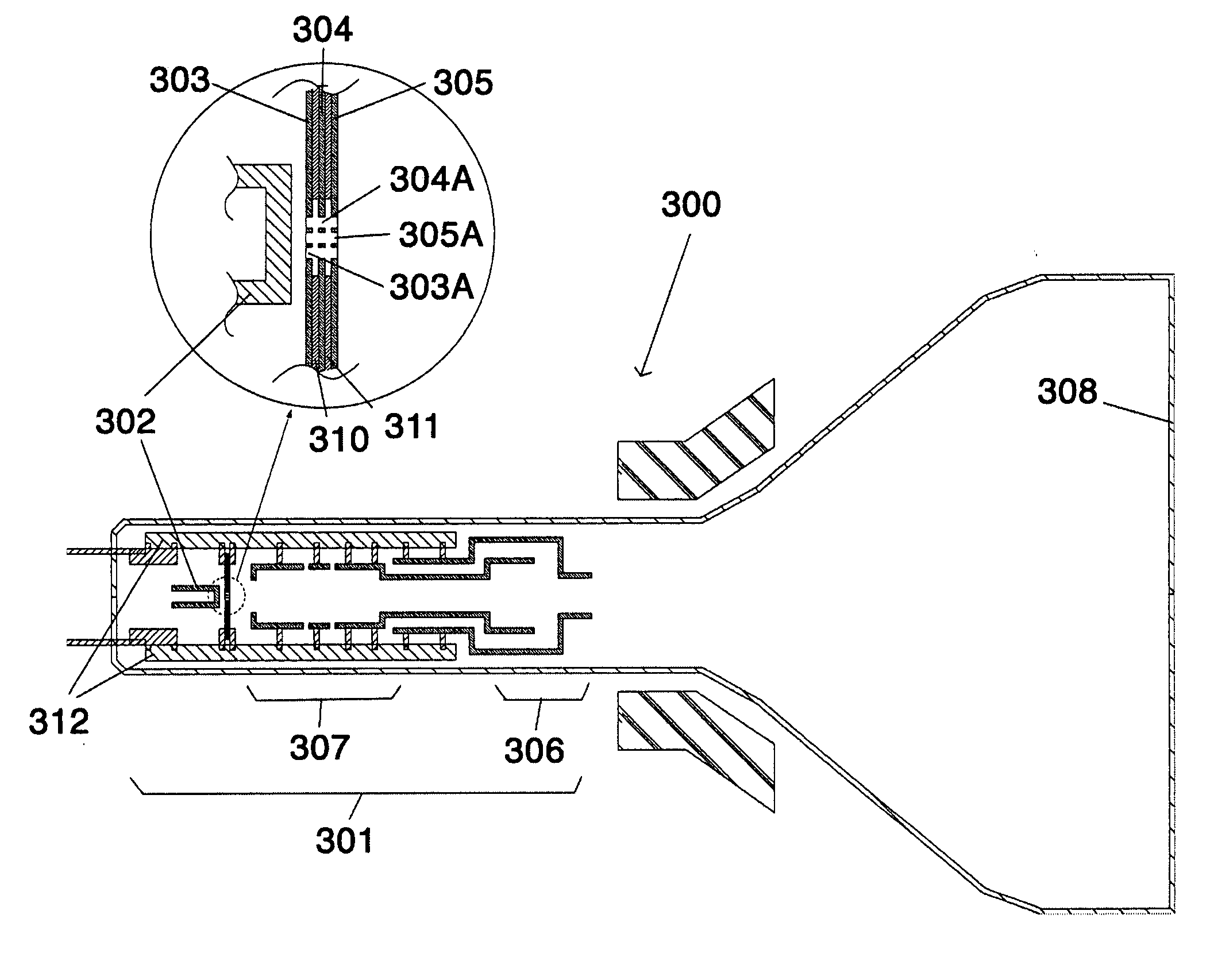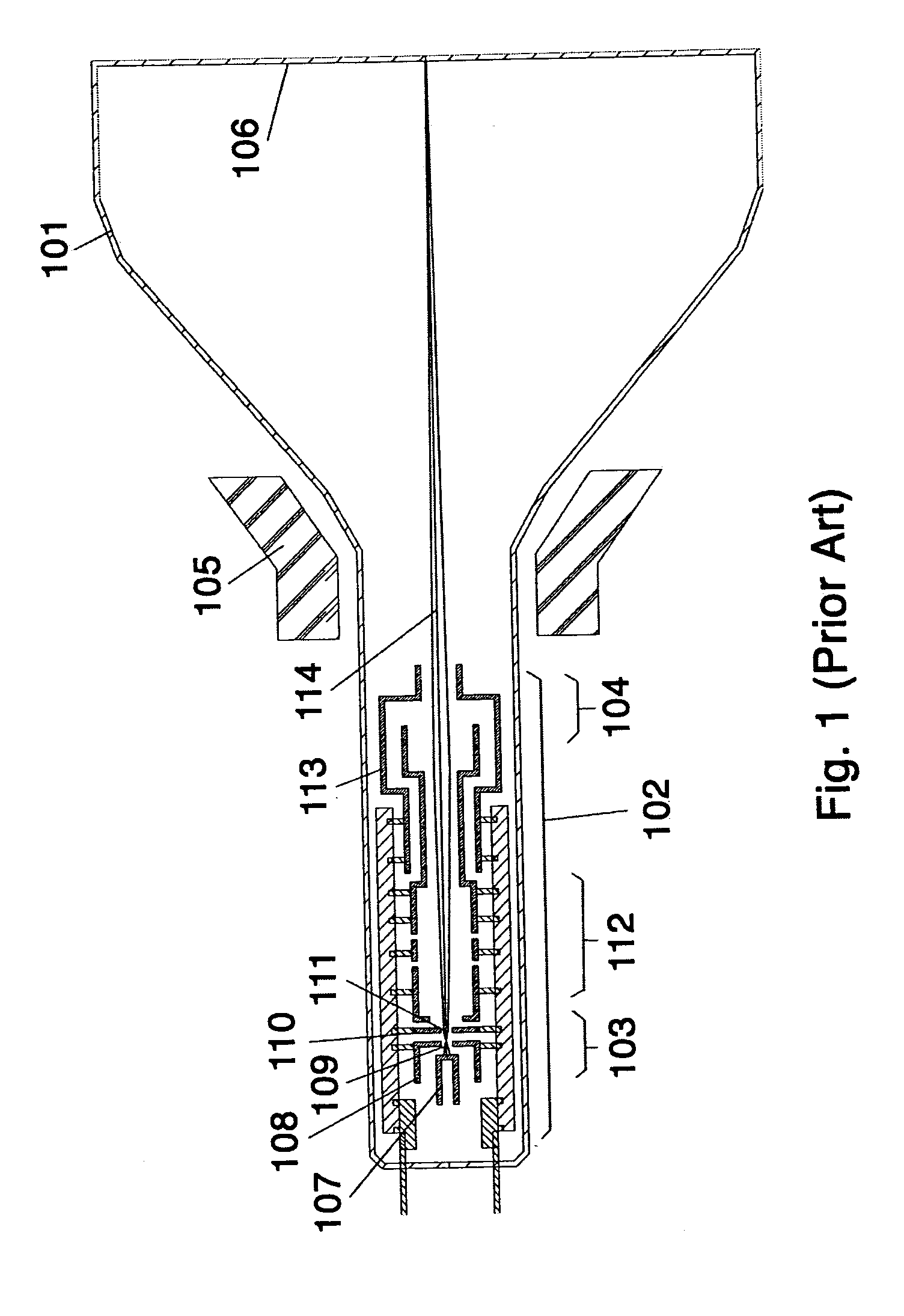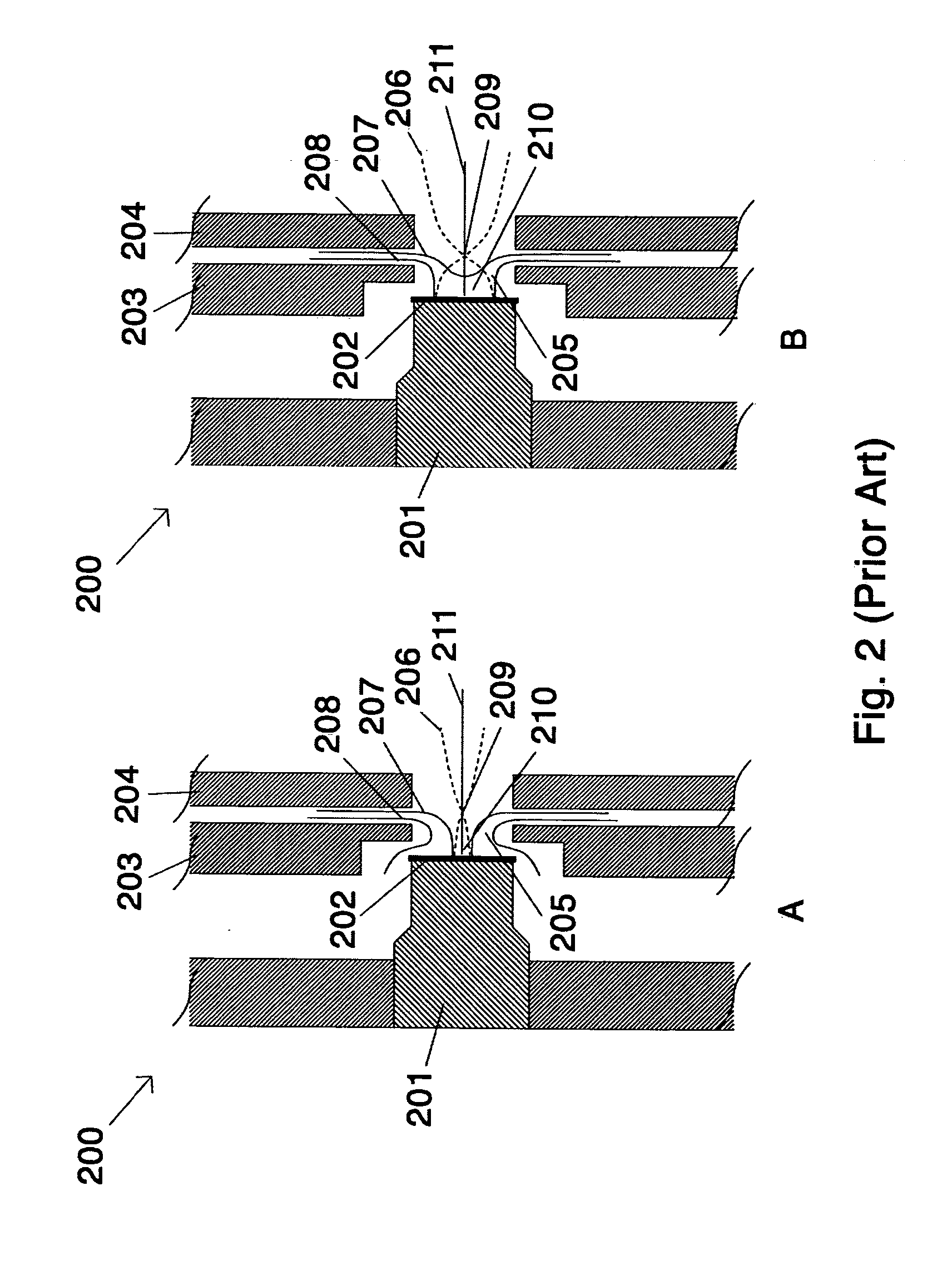High-definition cathode ray tube and electron gun
a cathode ray tube, high-definition technology, applied in the field of cathode ray tubes, can solve the problems of increasing brightness, reducing reliability, increasing the cost of the electron gun,
- Summary
- Abstract
- Description
- Claims
- Application Information
AI Technical Summary
Benefits of technology
Problems solved by technology
Method used
Image
Examples
Embodiment Construction
[0028]FIG. 3A illustrates a mono-beam CRT 300 of the present invention, such as may be used in a high-resolution projection or monochrome display. A mono-beam electron gun 301, having a cathode 302, a first beam-forming electrode 303, a second beam-forming electrode 304 and a third beam-forming electrode 305 is shown (refer to inset). The first and second beam-forming electrodes 303, 304 are electrically separated by an insulator 310, and the second and third beam-forming electrodes 304, 305 are electrically separated by another insulator 311. It should be understood to one skilled in the art of electron gun construction that the insulators 310, 311 may be comprised of a vacuum gap, dielectric material, polymer material, or any other electrically insulating material that is compatible with the vacuum and thermal requirements of vacuum tube production and operation.
[0029] A main lens 306 and a plurality of pre-focus electrodes 307 are disposed between the three beam-forming electrod...
PUM
 Login to View More
Login to View More Abstract
Description
Claims
Application Information
 Login to View More
Login to View More - R&D
- Intellectual Property
- Life Sciences
- Materials
- Tech Scout
- Unparalleled Data Quality
- Higher Quality Content
- 60% Fewer Hallucinations
Browse by: Latest US Patents, China's latest patents, Technical Efficacy Thesaurus, Application Domain, Technology Topic, Popular Technical Reports.
© 2025 PatSnap. All rights reserved.Legal|Privacy policy|Modern Slavery Act Transparency Statement|Sitemap|About US| Contact US: help@patsnap.com



